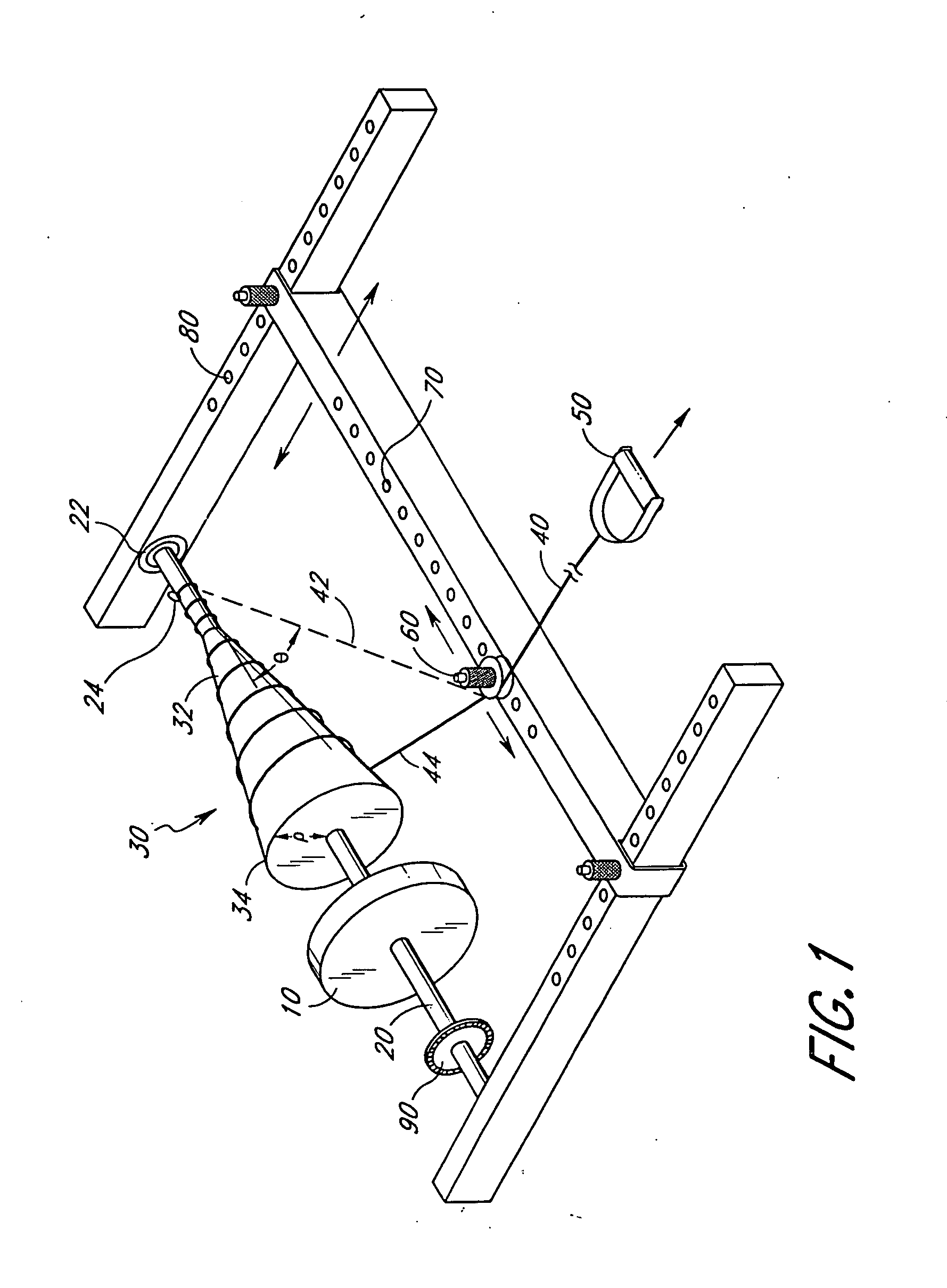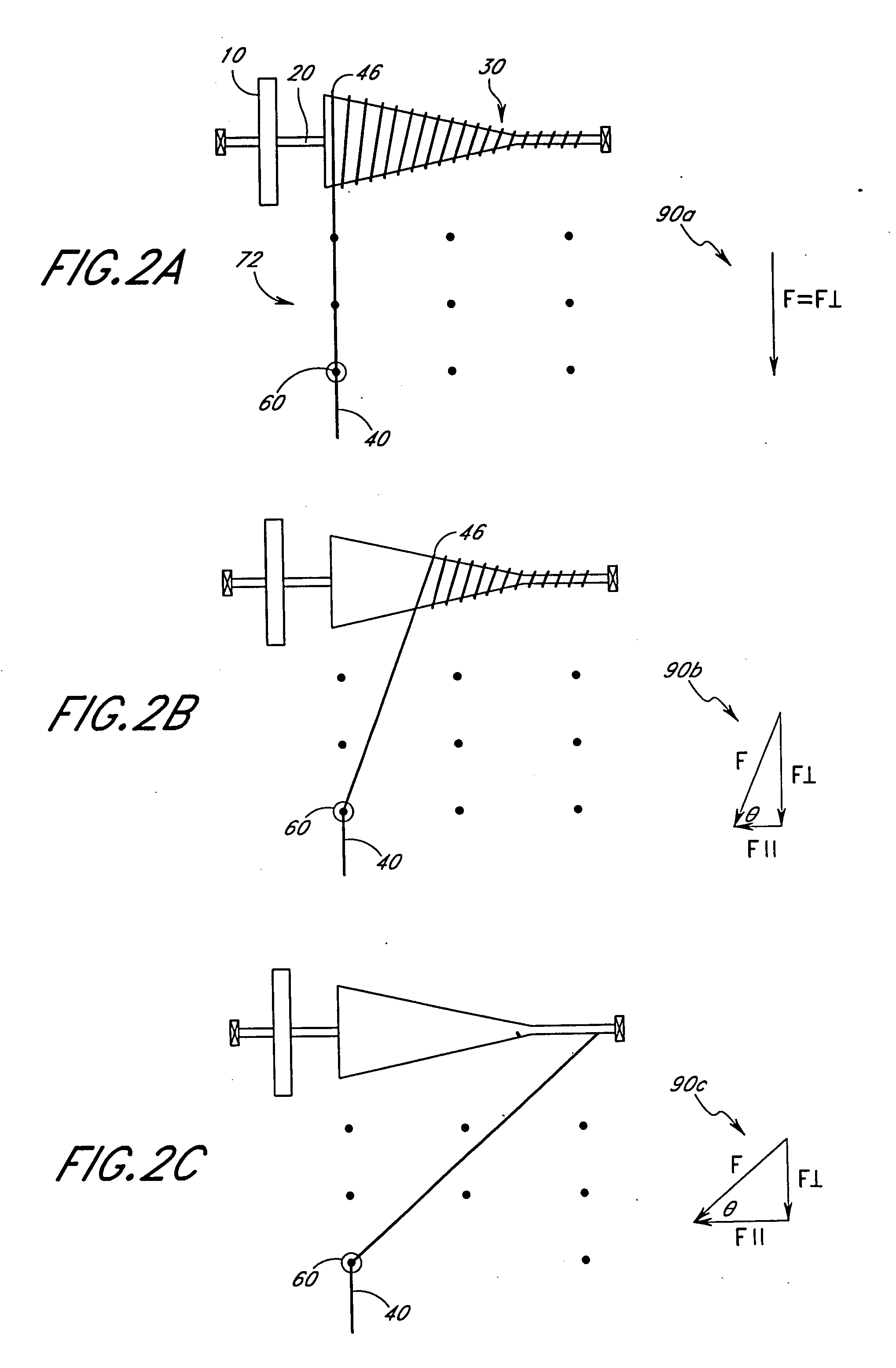Inertial resistance exercise apparatus and method
a technology of resistance exercise and equipment, applied in the direction of free-suspended gymnastics, gymnastic climbing, gymnastic exercise, etc., can solve the problems of line to begin unwrapping, axle to begin rotating, etc., to increase the rotational velocity of the flywheel, and create resistance for exercising
- Summary
- Abstract
- Description
- Claims
- Application Information
AI Technical Summary
Benefits of technology
Problems solved by technology
Method used
Image
Examples
Embodiment Construction
FIG. 1 illustrates an embodiment of the inertial resistance exercise device according to the present invention. A mass 10, preferably in the form of a flywheel, is mounted on an axle 20. A spool 30 may also be mounted to the axle 20. In an alternative embodiment, the flywheel 10 may be incorporated into the spool 30. As discussed below, the spool 30 may be configured in a number of shapes and sizes depending upon the manner and intensity of exercise desired by the user. The axle 20 is preferably supported by bearings 22. Proximate one end of the axle 20 is an anchor 24. One end of a line 40 is attached to the axle 20 at the anchor 24. The opposite end of the line 40 is attached to a grip 50 or other member which allows a user to apply force to the line 40.
As an alternative to the embodiment illustrated in FIG. 1, the mass of the flywheel 10 can be incorporated into the spool 30, eliminating the need of a separate flywheel and spool. As another alternative embodiment, the spool 30 c...
PUM
 Login to View More
Login to View More Abstract
Description
Claims
Application Information
 Login to View More
Login to View More - R&D
- Intellectual Property
- Life Sciences
- Materials
- Tech Scout
- Unparalleled Data Quality
- Higher Quality Content
- 60% Fewer Hallucinations
Browse by: Latest US Patents, China's latest patents, Technical Efficacy Thesaurus, Application Domain, Technology Topic, Popular Technical Reports.
© 2025 PatSnap. All rights reserved.Legal|Privacy policy|Modern Slavery Act Transparency Statement|Sitemap|About US| Contact US: help@patsnap.com



